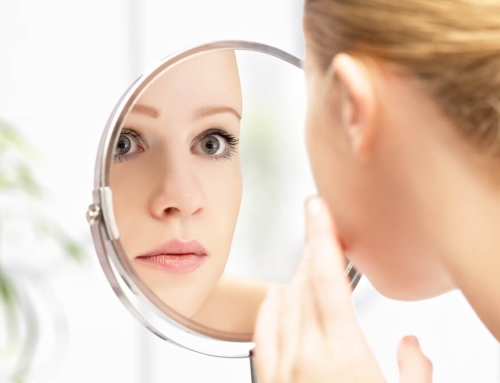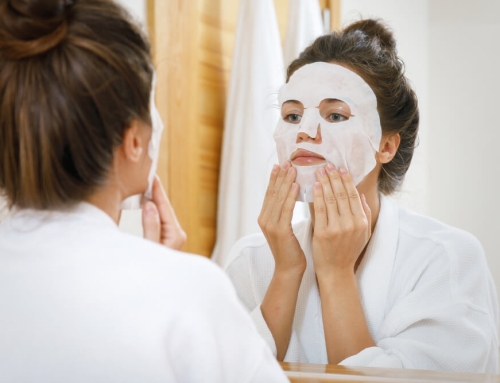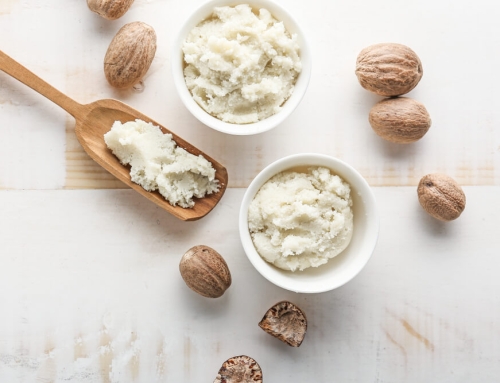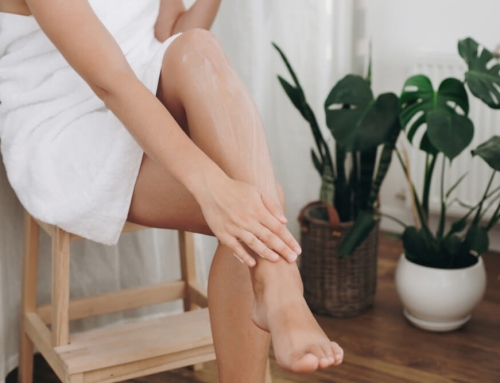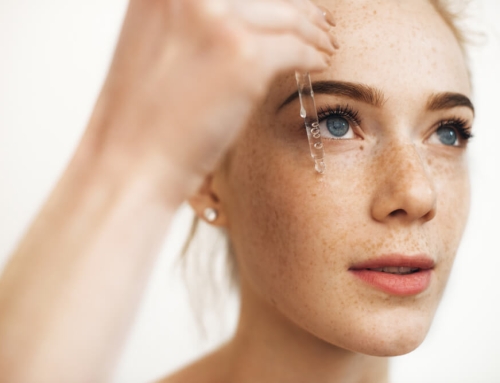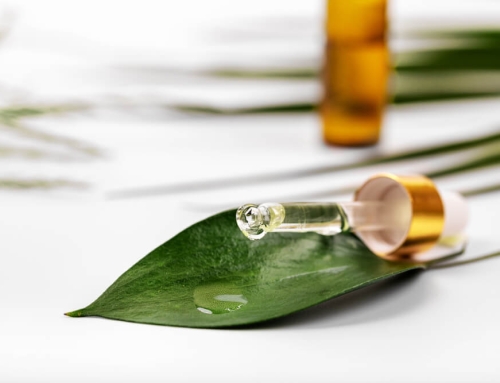Serums are a key part of any skin care routine. Their lightweight consistency enables them to penetrate far deeper into the skin’s layers than other products, allowing them to deliver their potent ingredient concentrations to the cells that are actually capable of triggering significant changes in the skin.
Using a single serum is far better than using no serum at all, but combining multiple serums is the way to ensure maximum benefits.
However, how you layer your serums is key…
Layer them incorrectly and they won’t have much of an effect. Layer the wrong combinations and they could actually cause damage to your skin. So, how do you go about it?
Here’s everything you need to know when it comes to layering serums…
Always Begin With Cleansed Skin

Before even thinking about which serum to apply, you need to make sure that your skin has been thoroughly cleansed.
Why?
Because even if you think that your skin may be clean, it most definitely isn’t. Everything from microscopic particles of dirt to excess sebum to dead skin cells are sitting on the surface of your skin right this very second, blocking the entranceways into your pores.
If you apply a serum over the top of this, it isn’t going to be able to actually enter into your skin. It will simply sit over the top of all of those other impurities, increasing your chances of clogged pores, greasy skin, and breakouts.
Cleansing should always be the very first step of any skin care routine – never apply and layer your serums onto un-cleansed skin.
Don’t Forget to Tone!
While many may get away with not using a toner, toners definitely have enough benefits to warrant being a regular part of your skin care routine.
Every cleanser, no matter how good it may be, will disrupt your skin’s natural pH balance, simply because the ingredients required to cleanse the skin are of such a different pH.
Skin with an off-balanced pH level will experience a number of different issues, such as:
- Dry patches
- Eczema
- Redness
- Oiliness
- Premature skin aging
Toners help to rebalance skin pH, meaning that your skin will then be in the best state possible to receive all of the benefits that your serums will provide.
Make Sure That You’ve Picked the Best Serums for Your Skin
Although the “less is more” concept doesn’t really apply to serums, you still need to make sure that the serums you have picked are actually suitable for your skin.
Yes, some serums work well for all skin types, especially when it comes to hydrating serums. However, other serums may be targeted towards one specific skin issue, so you need to ensure that you have picked the correct products.
Here’s a quick guide that you can follow:
- If your skin is dry, go for something that contains hydrating plant oils, such as the 24K Skin Rejuvenating Serum, which is packed with hemp seed oil and wheat germ oil
- If you’re looking to brighten up your skin and reduce the appearance of dark spots and discoloration, look for a formula that contains vitamin C, kojic acid, and vitamin A, like the 24K Bio-Brightening Dark Spot Solution
- If the skin around your eyes is looking a little creased and crinkled, look for an eye serum that contains peptides, vitamins, and antioxidants, such as the 24K Intensive Eye Serum
- If aging skin is your issue, the 24K Termica Activation Serum is packed with an incredibly intense blend of anti-aging ingredients
- If you’re simply looking for something to keep your skin moisturized while you sleep at night, you need a serum with soothing extracts, along with peptides to help with the formation of proteins, which is why the 24K Nano Night Recovery is perfect
One thing to keep in mind when choosing serums is that some formulas may cost more than a moisturizer, even though there is physically less of it.
However, there’s a reason for this…
While moisturizers usually contain a number of thickening and emollient ingredients, serums don’t. Instead, they’re packed with a concentrated blend of active ingredients, many of which are much costlier than the filler ingredients that you will find in a moisturizer. That serum bottle may seem small, but the formula within is incredibly potent, making it well worth the investment. You will also only need to use a couple of drops each time, meaning that a little will go a very long way.
Change Your Serums With the Seasons
You may have finally found the perfect serum combination, but, unfortunately, this is all going to need to change as soon as the weather turns.
Why?
Because your skin’s needs change with the seasons, meaning that the ingredients it requires in order to thrive will also be different.
For example, in the summer months, your skin’s oil glands are at their most active, meaning that your skin may not need quite as much external hydration. Instead, you may be better off focusing on ingredients that will help to repair and protect from sun damage.
However, in the winter, your skin will become much drier, meaning that richer and more hydrating serums become essential.
This may seem a little complicated at first, but try getting to know your skin better – it won’t be long before knowing exactly what your skin needs becomes second nature to you.
Begin With Either the Most Active Formula or the Lightest Consistency
Now, when it comes to which serum to start off with, there isn’t a right or wrong answer, and this is exactly why so many people end up confused.
However, the best way to begin is by applying your most active formula. This means that if you have a serum containing a strong dose of vitamin C or retinoids, this is the one to apply first.
Why?
Because you want these powerful ingredients to be able to properly penetrate into your skin without anything in their way, including other serums. Active formulas always work best when applied onto clean and clear skin.
However, there’s an exception…
The consistency of your serums is really important when deciding how to layer them. Ideally, you want the lightest and thinnest serum to be applied first. These serums will usually have a smaller molecular size than thicker serums, meaning that applying a thick serum first and then a thin serum after would prevent the ingredients in the thin serum from being able to make their way through the thick serum.
What should you do if your most active serum is much thicker than your other serums?
The best way to go about this would be to use them at separate times. Since the thin serums won’t be able to penetrate through the thicker, active serum, use the active one in the morning, and then layer on your thinner serums in the evening.
Follow Up With Heavier Blends

Once you have figured out which serum needs to be applied first, the rest of the order will follow pretty easily. Simply apply your second-thinnest serum next, finishing off with the thickest serum.
The thicker serums are usually designed to hydrate the skin, and will form a protective seal over the thinner serums that you have applied first, helping to push those ingredients deeper into your skin.
Don’t Apply Water-Based Serums After Oil-Based Serums
As you likely already know, oil and water don’t mix. However, you will find some serums that are oil-based and others that are water-based, so where do you go from here?
This is another exception where the thinnest to thickest rule doesn’t apply. In this case, you would need to apply your water-based serum first and then follow this up with the oil-based serum. If you did it the other way around, your water-based ingredients won’t be able to make it through the oil, rendering them useless. Fortunately, most oil-based serums tend to be thicker than water-based serums, which makes this a little easier.
How Many Serums Should You Be Layering?
While you may have an entire shelf full of different serums and similar potions, you should really stop at three with each session.
Why?
Because after three layers, your fourth serum will struggle to actually make it to your skin, which means applying it will be pretty much pointless. Plus, since you should ideally wait for a minute or two for each serum to settle into your skin before applying the next one, using more than three serums would really prolong your overall skin care routine!
If you already have more than three go-to serums, this doesn’t mean that you need to cast any aside. Instead, group them together and apply three in the morning and three at night.
Patting vs Rubbing
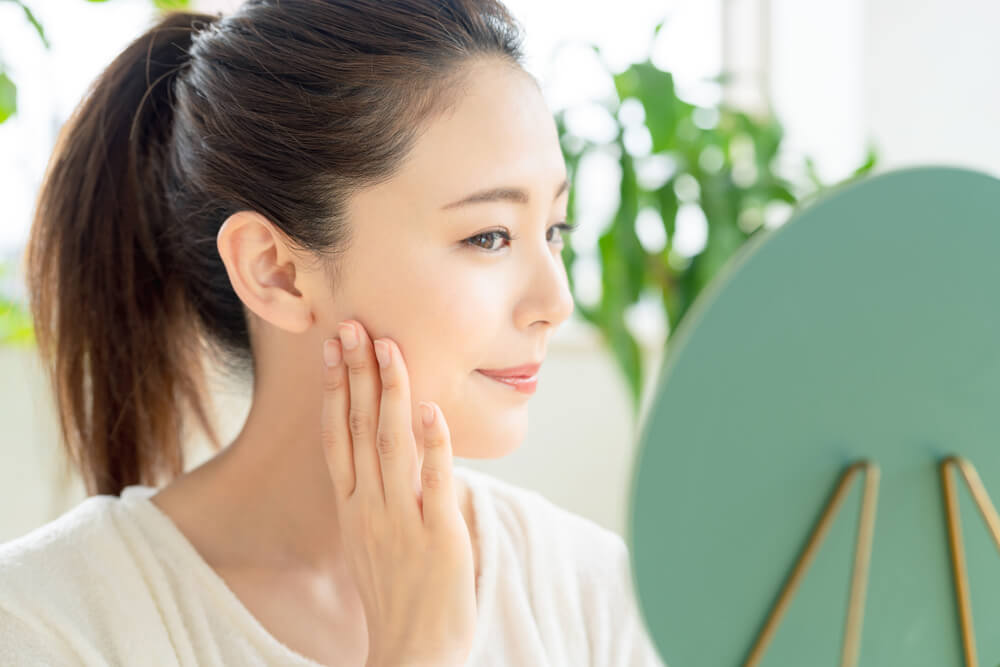
Most people tend to rub their serums into their skin, believing that this is the best way to really push that product deep into their skin. However, rubbing at your skin can cause quite a few problems, such as:
- Friction against the skin, which can lead to irritation
- Tugging and stretching at the skin, which exacerbates fine lines and wrinkles
- Breaking down the collagen and elastin fibers beneath the skin, which again causes sagging and wrinkles
So, what should you do instead?
Patting a serum into your skin is actually so much more effective. It may feel a little strange at first, but a patting motion will actually help to increase product absorption while ensuring that the products you are using are evenly distributed through your skin. As an added bonus, patting also helps to boost blood circulation in your skin, which will give you a bright and rosy glow.
How exactly should you be patting your serums in?
Everyone has their own preferred method, but one of the most effective is to first apply your serum to your hands – this will warm the formula up slightly, which makes it much easier for your skin to absorb.
Then, start from the center of your face and work your way outwards; begin by placing your hands on either side of your nose and slowly pat your way to the outer edges of your face. If you end up with any excess product on your hands, rub this onto your fingers and then continue patting it in around your orbital bone until your skin has soaked it all up.
What Comes After Serum?
In a standard skin care routine, a serum is usually followed up by a moisturizer. The way in which a moisturizer forms a protective film over the surface of the skin will enhance product absorption, ensuring that you are able to reap all of the many benefits that your serum brings.
However, those with excessively oily skin may want to do things a little differently…
Sometimes, overdoing it with the products you apply can really exacerbate oiliness by clogging up the pores and leading to breakouts. Even if you go for oil-free formulas, overloading your skin will only spell trouble.
In this case, you may find that layering a few different serums is enough to give your skin all of the nutrients and hydration that it needs. Of course, since you won’t be using a moisturizer, you will need to make sure that your serum formulas really do contain ingredients that will be beneficial to your own individual skin type and concerns.
Serums are a must-have in just about every skin care routine. It doesn’t matter what your skin type is or which skin concerns you may be dealing with, chances are that there is a serum out there that will be perfectly suited to your skin. It may take a bit of trial and error before you find your perfect combination of serums, but, once you do, understanding exactly how to layer them will ensure that you really are getting the most out of every single one.


